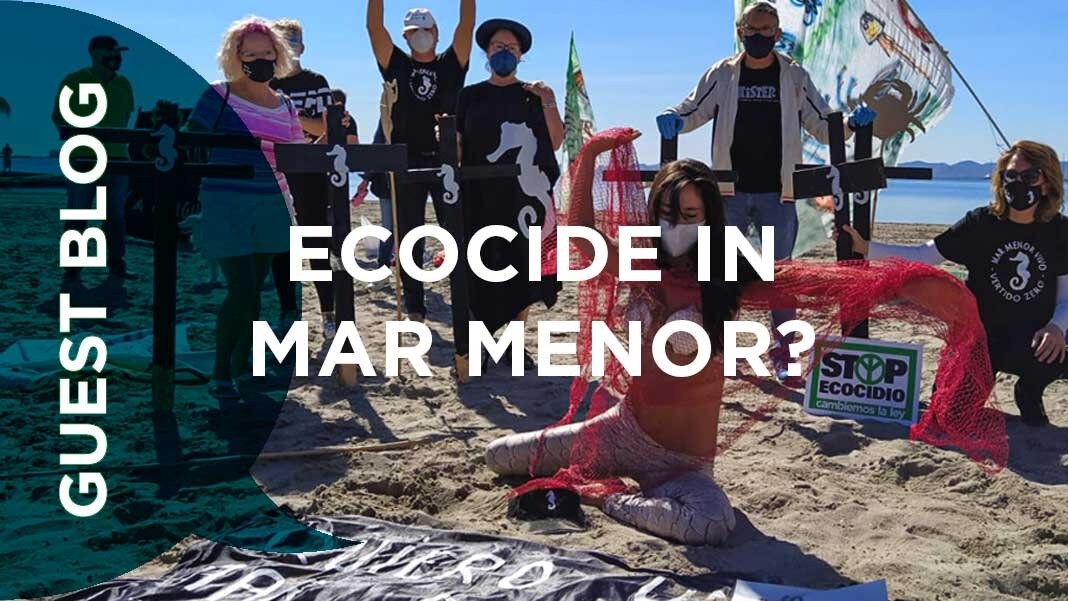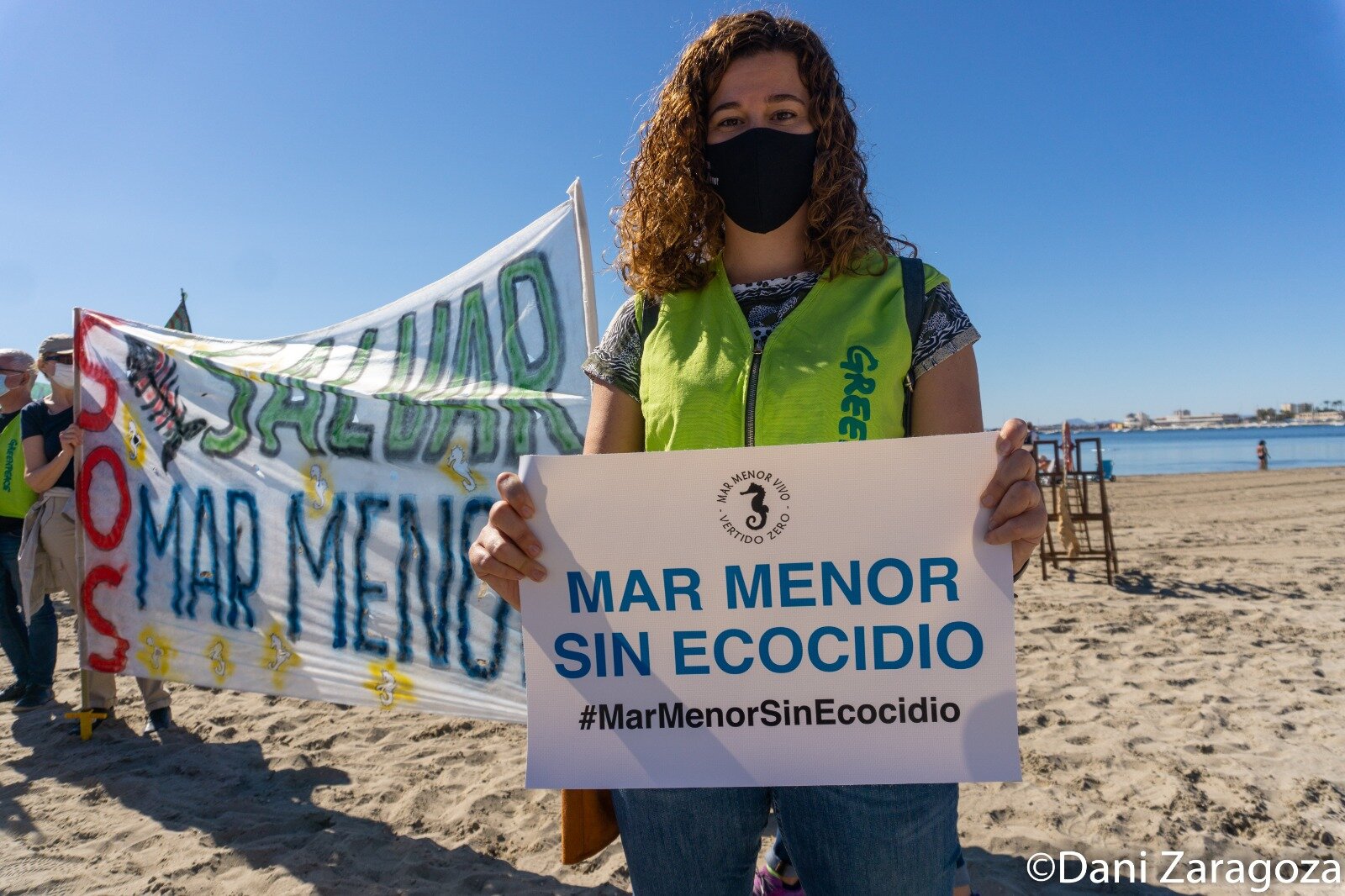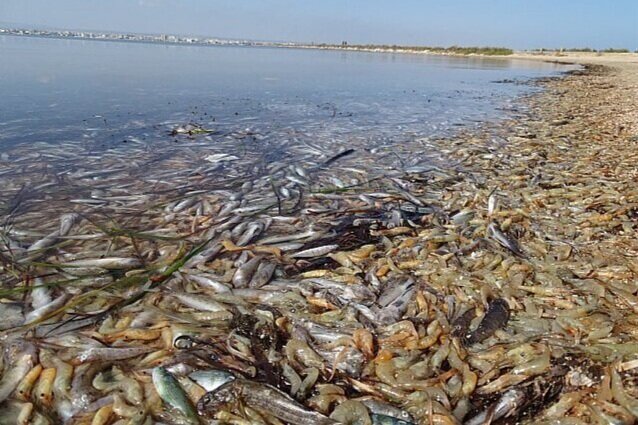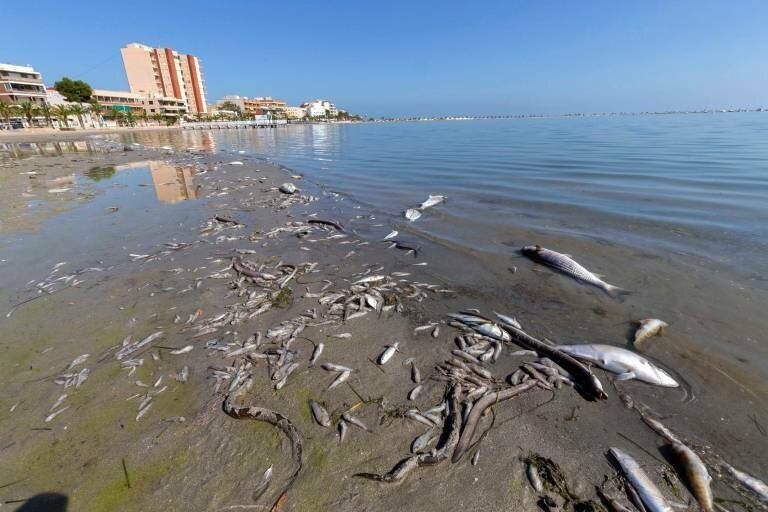Ecocide in Mar Menor?
This guest blog is part of a series intended as a dedicated space for the many global movements/campaigns around the globe confronting ecosystem destruction to share their stories, narratives and perspectives.
This blog post was written by lawyer and environment consultant, Eduardo Salazar Ortuño. He writes about Mar Menor near Murcia in the south east of Spain, the largest hypersaline coastal lagoon in Europe. This unique ecosystem is widely believed to be a site of increasing ecocide, mainly due to mining waste and agrochemicals.
Image credits: Agencia EFE
The Mar Menor, located in the Region of Murcia, is the largest hypersaline coastal lagoon in Europe. It has a surface of 135 km2 and a maximum depth of 7 m. It is connected to the Mediterranean Sea through three channels or gullies. Due to these environmental peculiarities, there is a great ecological wealth, represented by bird fauna and emblematic and/or endangered marine species.
All of the above justifies that it has been granted various national, European or international protection figures as a wetland protected by the Ramsar Convention, Specially Protected Area of Interest for the Mediterranean in accordance with the Barcelona Convention, Natura 2000 Network Special Conservation Area and natural space partially protected as a Regional Park and Protected Landscape, in accordance with regional regulations of the Region of Murcia.
Image credits: Dani Zaragoza
Damaging effects of industrial activity
Image credits: Marcial Guillén (Agencia EFE
However, despite these figures and their natural, cultural, scenic, historical and economic values, the Mar Menor is in serious danger due to the impacts caused by human beings over the last decades, such as mining waste with the presence of heavy metals that reach the lagoon with the contribution of rainwater; the dredging and widening of the Estacio channel in the 70s, which produced physical-chemical changes with a significant drop in salinity and temperature; the chaotic urban development in its shores; and above all for the nutrients contained in the agrochemicals used in intensive and industrial agriculture that takes place in its environment and that are discharged directly or at the water table.
All these aggressions, tolerated by the Administrations whose purposes were to ensure the rational use of natural resources, have led the Mar Menor to such a state of deterioration and eutrophication, which in 2016 and 2017 produced an explosion of phytoplankton with the consequent darkening of the waters, which prevented the marine plants from being able to photosynthesize, causing the disappearance of 85% of their grasslands.
In October 2019 as a result of the contamination of its waters and heavy torrential rains, an episode of anoxia broke out that led to the death of three tons of fish and crustaceans.
Image credits: ANSE, Ecologistas en Acción
Local investigation and the criminalisation of ecocide
Since 2017, as a result of a previous investigation by the Public Prosecutor's Office in which the Nature Protection Service of the Civil Guard actively collaborated, an Investigating Court of Murcia has analyzed the behaviors of dozens of agricultural entrepreneurs in Campo de Cartagena - Cuenca slope to the Mar Menor and the adjacent aquifer -, as well as some state authorities of state and autonomous administrations.
While this judicial instruction is being developed, focused on the specific contamination by nitrates of certain actors and the tolerance of specific authorities of the Segura Hydrographic Confederation, critical voices are raised with the current configuration of ecological crimes in the Penal Code, to cover situations of such extreme and massive degradation of an ecosystem. As a result of this criticism to which the limitations of current ecological crimes lead by their dimension, penalties, prescription of behaviors and dependence on administrative regulations, the idea of considering the "crime of ECOCIDE" as engine of justice in the disaster that occurred in the Mar Menor arises.
Image credits: Julia Albadalejo, demonstration on June 9th, Murcia
The figure of ECOCIDE, as a concept that responds to the massive aggression to an ecosystem and, in this case, thanks to extreme negligence and deliberate clandestine and constant dumping, is the one that best adapts to the serious damage that the Mar Menor has suffered during the last decades and would serve to give a response from the Law at the height of the circumstances. A partial conviction based on the crimes currently included in the Penal Code may not be exemplary and not serve to reverse the current trend that suffocates the salt lake. Therefore, the Mar Menor must become another symbol of the need to establish this new legal figure.
Likewise, the crime of ECOCIDE is the other side of the coin of the powerful initiative that has emerged to grant rights to the salt lake through a Popular Legislative Initiative. Both new institutions must serve so that, from an ecocentric perspective, it is possible to restore ecological balance to the Mar Menor.
Further sources:
Blog post from Stop Ecocidio Spain, 11/09/2020: Queremos un mar menor sin ecocidio
Press: Can Spain fix its worst ecological crisis by making a lagoon a legal person? The Guardian, 18/11/2020
Platform promoting the Legal Personality of the Mar Menor through a Popular Legislation Initiative (in Spanish): ILP Mar Menor
Video (in Spanish): 500.00 signatures to stop ecocide in Mar Menor and ILP call for signatures






